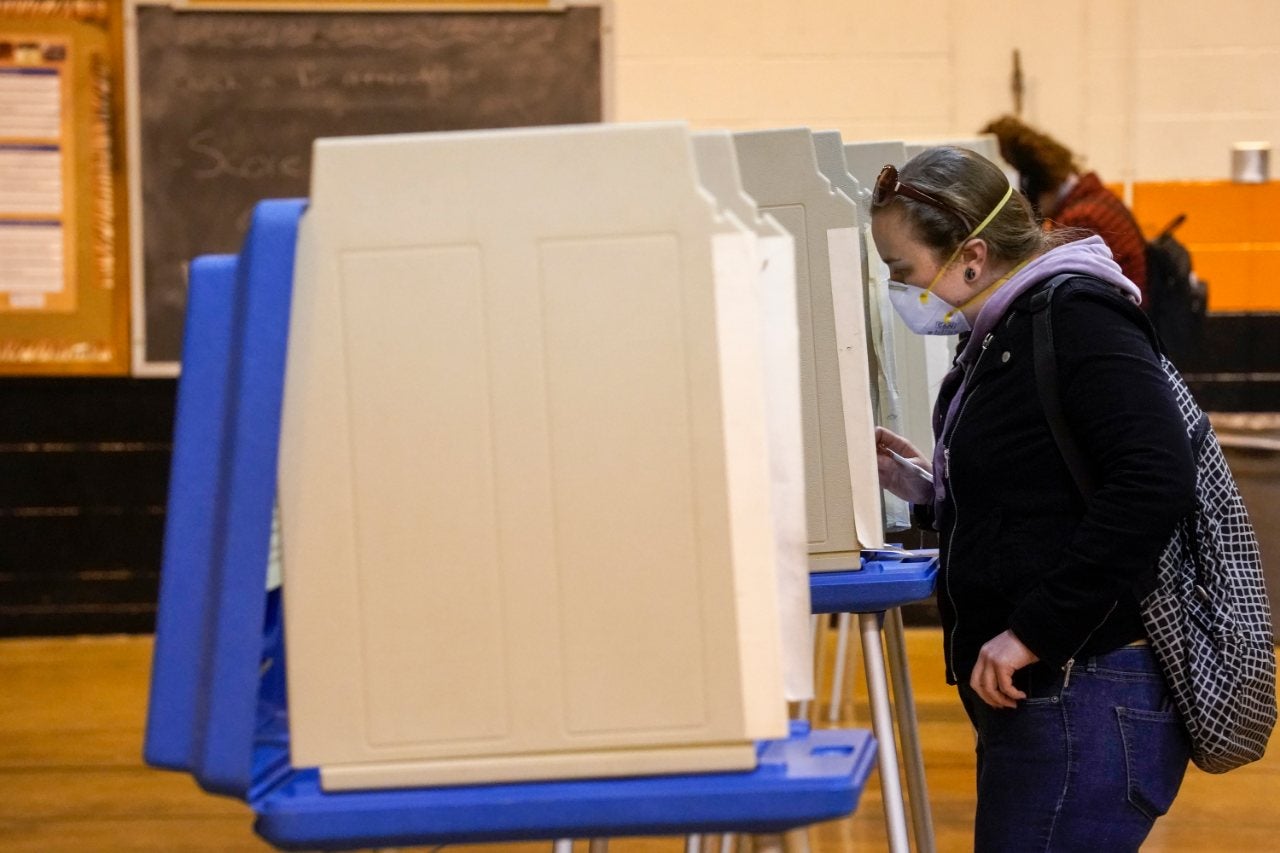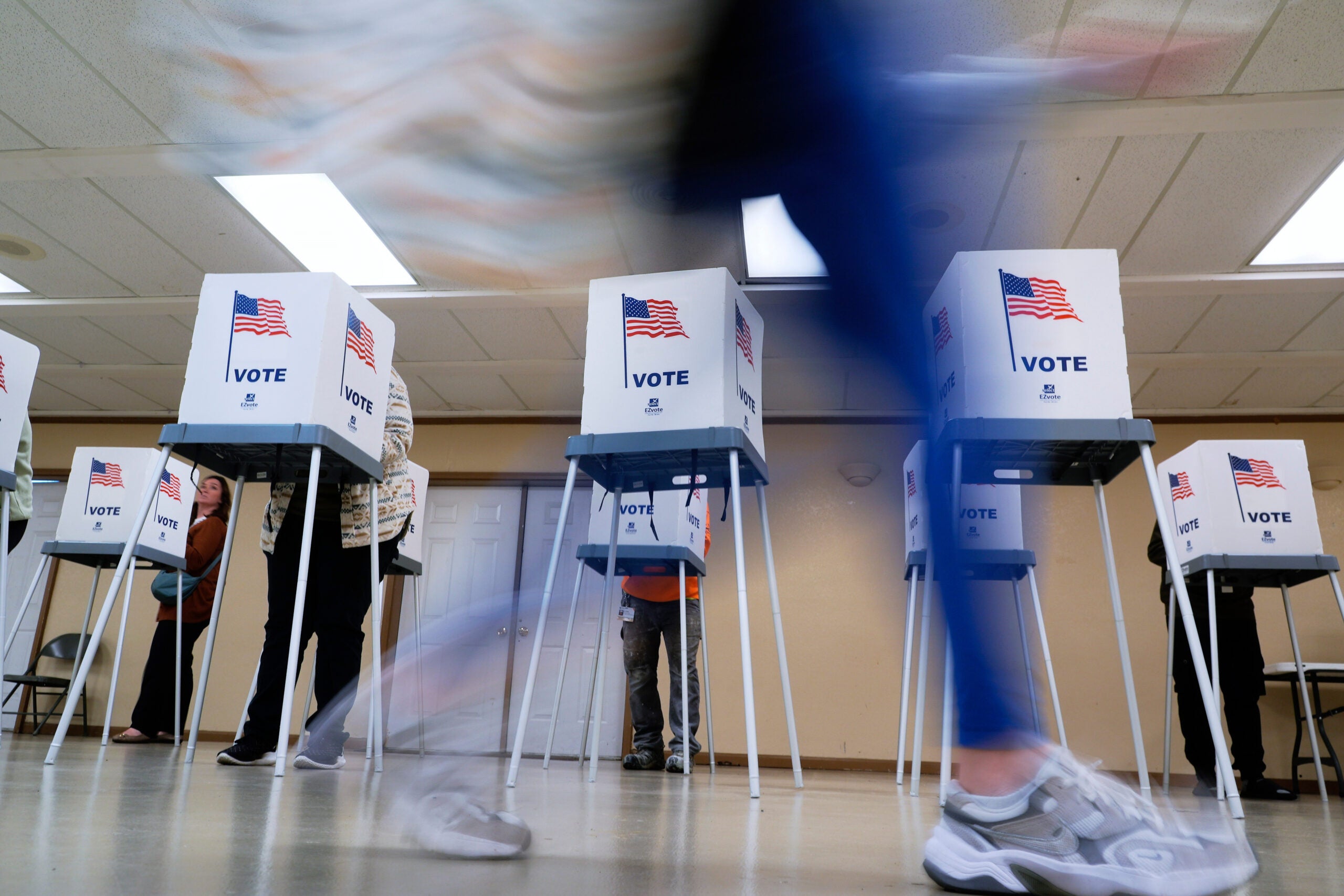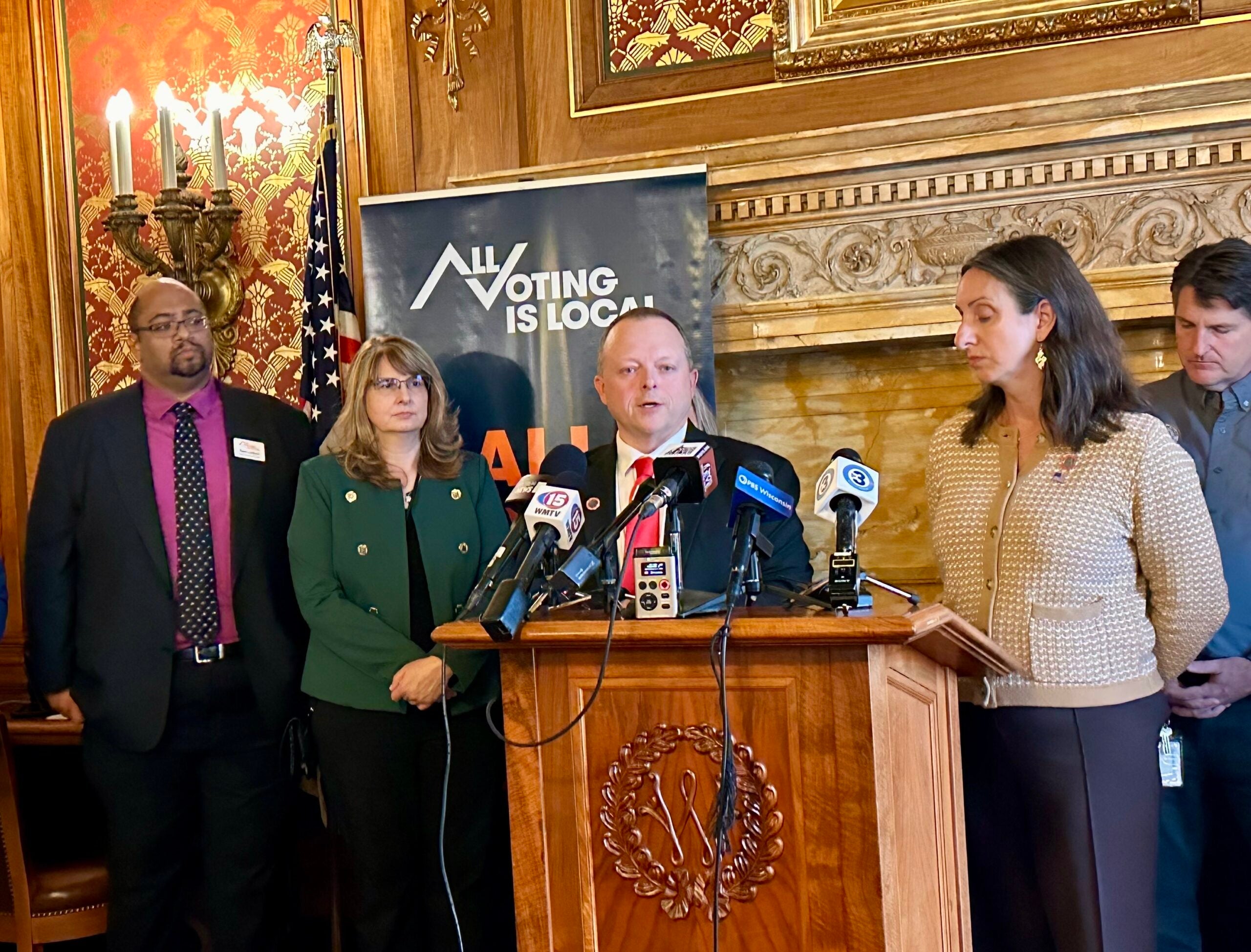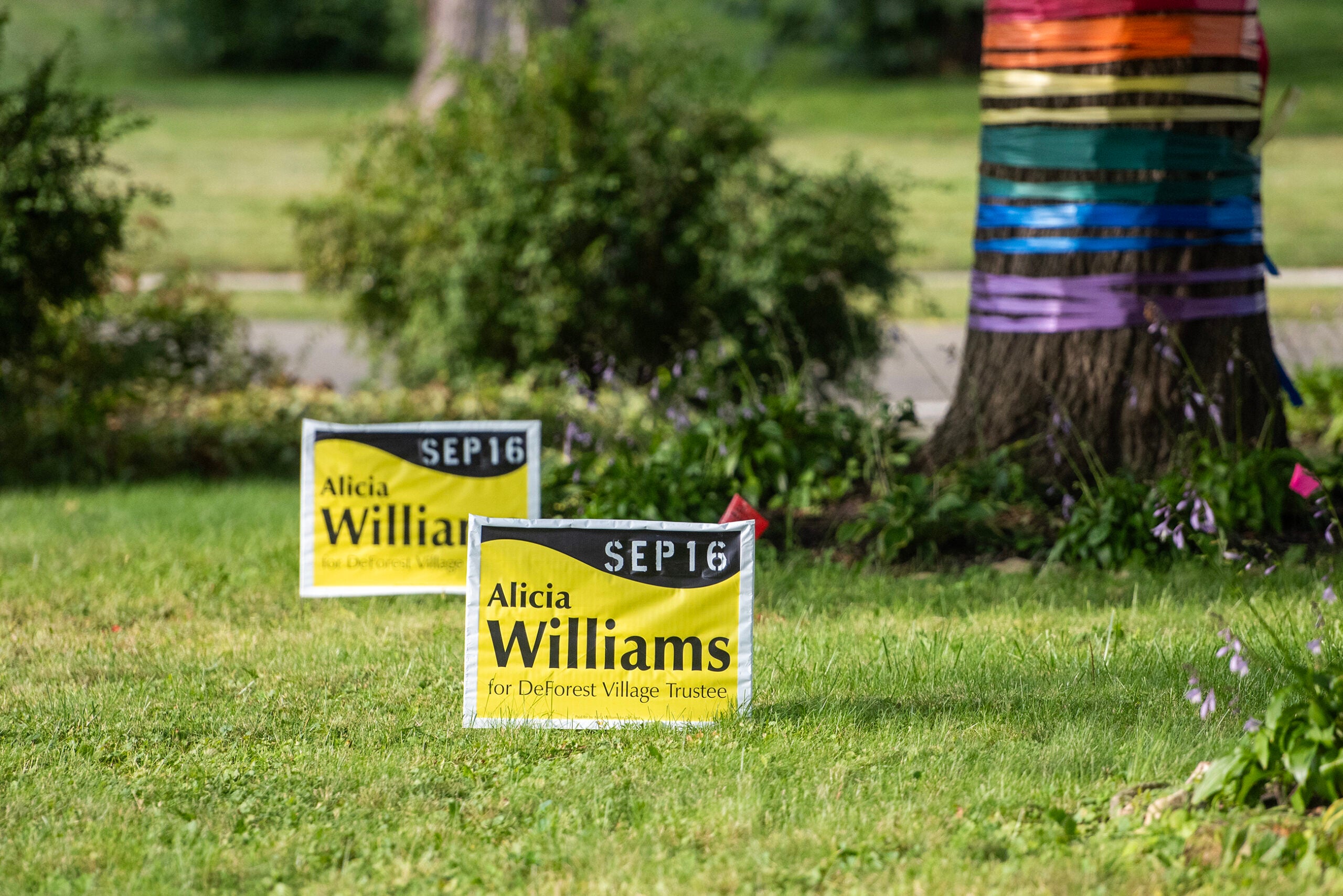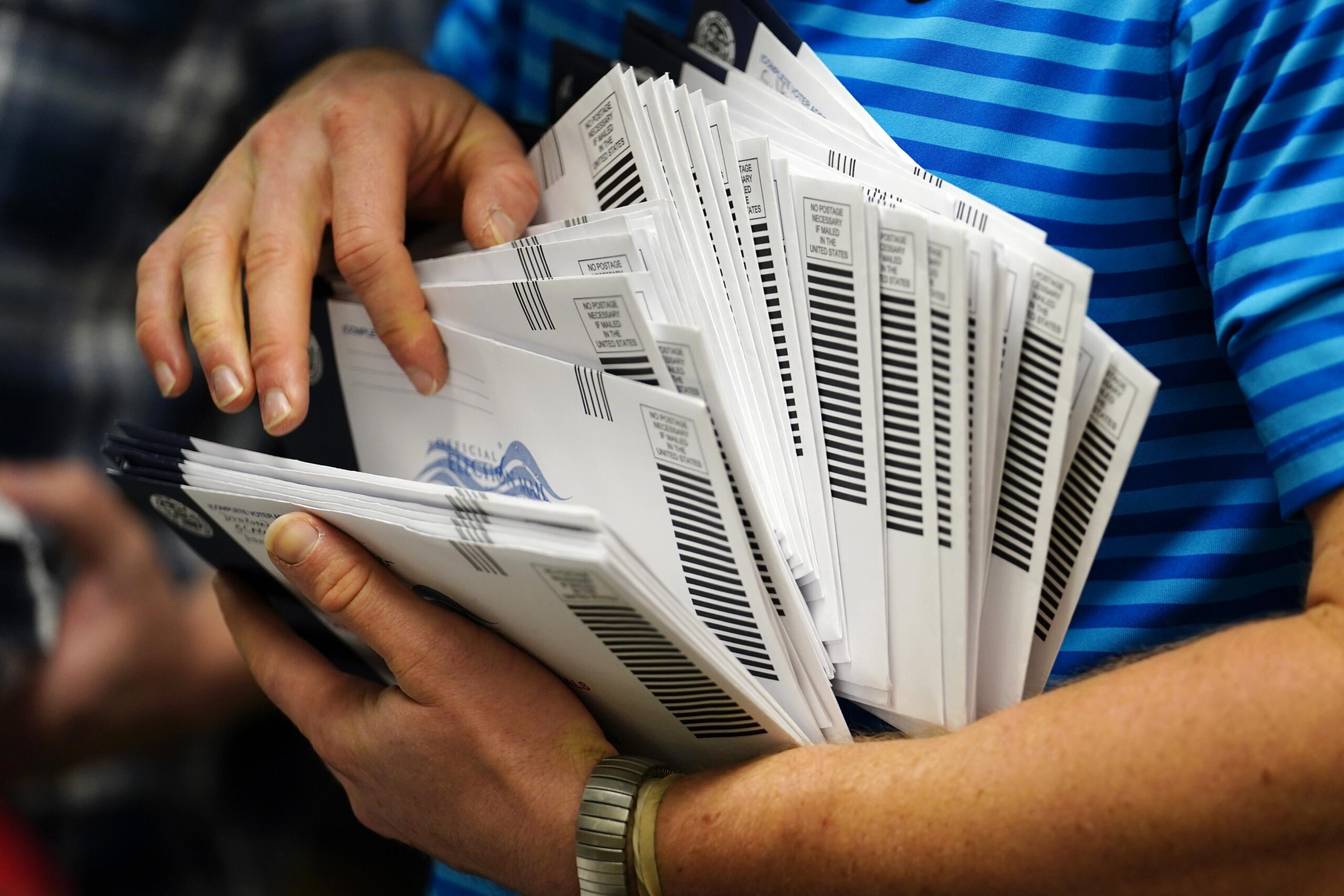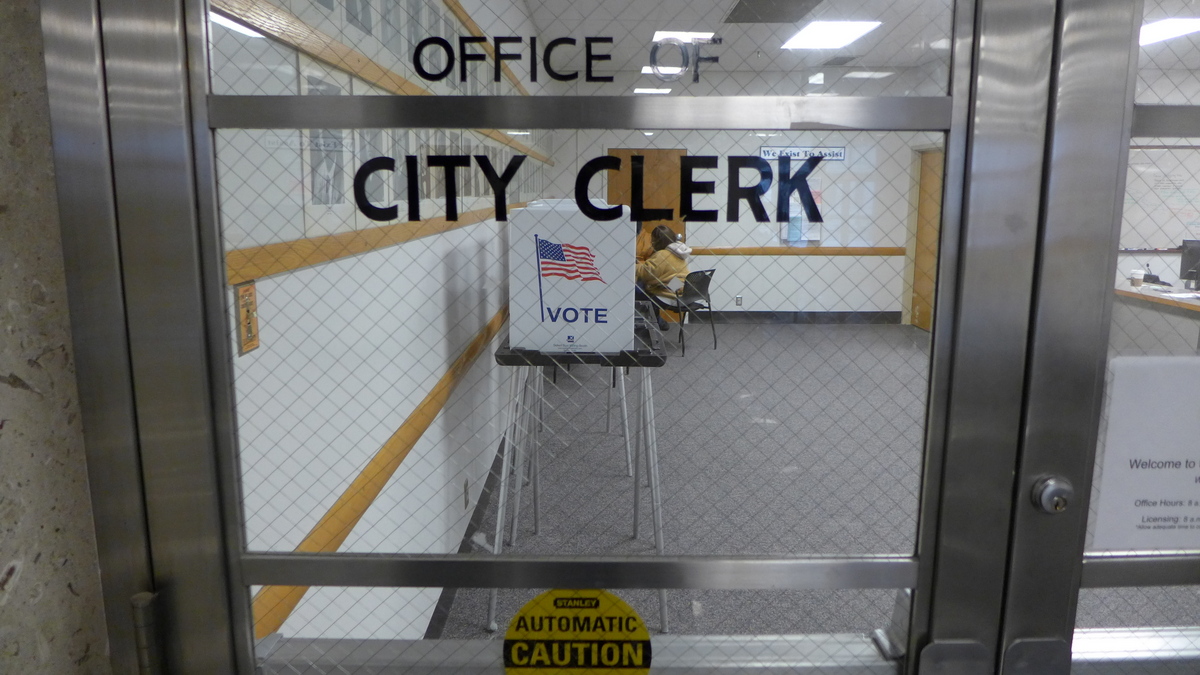More than 1 million people in Wisconsin requested mail-in ballots for Tuesday’s election, but how many of those ballots were returned to clerks won’t be known for several days.
Wisconsin’s election proceeded Tuesday in the middle of the ongoing COVID-19 pandemic.
According to the state Elections Commission, 1,287,827 people requested absentee mail-in ballots. Of those, 1,003,422 had been returned to clerks as of 7:30 a.m. Wednesday. Under a federal court ruling, clerks can continue to accept ballots by mail until Monday as long as they were postmarked by Election Day.
News with a little more humanity
WPR’s “Wisconsin Today” newsletter keeps you connected to the state you love without feeling overwhelmed. No paywall. No agenda. No corporate filter.
The data also shows a gap of 12,710 ballots between what was requested by voters and what clerks mailed out. If voters didn’t receive their ballot before Election Day, election officials encouraged them to vote in person.
Meagan Wolfe, administrator of the Wisconsin Elections Commission, noted Wednesday the commission’s data about requested, sent and received ballots might not be completely up-to-date as local election officials manually update the numbers and might be behind on data entry.
“That is 100 percent dependent on that clerk entering that data into the system,” Wolfe said on a call with reporters Wednesday afternoon. “It’s not a tracking system, like a package. It’s the clerk entering when they received the request and when they sent the ballot.”
Many at the polls Tuesday said they were there because they never received an absentee ballot they requested.
Turnout in Wisconsin’s 2016 presidential primary election was about 2.1 million voters, roughly 47 percent of all registered voters in the state. That means about 1 million people would have needed to vote in person Tuesday to match that turnout.
[[{“fid”:”1215376″,”view_mode”:”full_width”,”fields”:{“format”:”full_width”,”alignment”:””,”field_image_caption[und][0][value]”:”%3Cp%3EVoters%20observe%20social%20distancing%20guidelines%20as%20they%20wait%20in%20line%20to%20cast%20ballots%20at%20Washington%20High%20School%20while%20ignoring%20a%20stay-at-home%20order%20over%20the%20coronavirus%20threat%20to%20vote%20in%20the%20state’s%20presidential%20primary%20election%2C%20Tuesday%2C%20April%207%2C%202020%2C%20in%20Milwaukee.%20%3Cem%3EMorry%20Gash%2FAP%20Photo%3C%2Fem%3E%3C%2Fp%3E%0A”,”field_image_caption[und][0][format]”:”full_html”,”field_file_image_alt_text[und][0][value]”:”Voters wait to cast ballots.”,”field_file_image_title_text[und][0][value]”:”Voters, voting, election, polling, Washington High School, Milwaukee”},”type”:”media”,”field_deltas”:{“3”:{“format”:”full_width”,”alignment”:””,”field_image_caption[und][0][value]”:”%3Cp%3EVoters%20observe%20social%20distancing%20guidelines%20as%20they%20wait%20in%20line%20to%20cast%20ballots%20at%20Washington%20High%20School%20while%20ignoring%20a%20stay-at-home%20order%20over%20the%20coronavirus%20threat%20to%20vote%20in%20the%20state’s%20presidential%20primary%20election%2C%20Tuesday%2C%20April%207%2C%202020%2C%20in%20Milwaukee.%20%3Cem%3EMorry%20Gash%2FAP%20Photo%3C%2Fem%3E%3C%2Fp%3E%0A”,”field_image_caption[und][0][format]”:”full_html”,”field_file_image_alt_text[und][0][value]”:”Voters wait to cast ballots.”,”field_file_image_title_text[und][0][value]”:”Voters, voting, election, polling, Washington High School, Milwaukee”}},”link_text”:false,”attributes”:{“alt”:”Voters wait to cast ballots.”,”title”:”Voters, voting, election, polling, Washington High School, Milwaukee”,”class”:”media-element file-full-width”,”data-delta”:”3″}}]]Wolfe said statewide turnout numbers won’t be available until Monday, when clerks are able to release election results.
According to unofficial numbers released by the Madison city clerk, about 26,000 people voted in person across the city. Madison had 66 polling places operating.
Combining absentee ballots counted so far and in-person voting, the clerk’s office unofficially pegged turnout at 50 percent. That number will go up as more absentee ballots arrive by mail, up until Monday. Those ballots will be added to the turnout total on that day.
The 50 percent turnout is a marked decline from Madison’s 66 percent turnout for the 2016 presidential primary.
In Milwaukee, which opened only five polling places in the entire city, election officials announced Wednesday that about 19,000 people showed up in person to vote. Hundreds of people remained in line to cast ballots after the scheduled 8 p.m. closing time.
Under state law, anyone in line at the time polls close is allowed to cast a ballot.
Voter turnout in Eau Claire County was about 34 percent of registered voters, not including mail-in ballots that may continue to arrive through April 13, its clerk said Wednesday.
In Superior, clerk Terri Kalan said just under 3,600 out of 4,300 requested absentee ballots have been returned and more than 2,100 people voted in person.
“In most polling locations, we had double the (mail-in) absentee voters than we did the regular voters that showed up to vote,” Kalan said.
Unofficial results so far show a roughly 46 percent voter turnout in Superior, but Kalan estimated that may rise to 52 percent once all absentee ballots are counted. She said turnout was fairly similar to the 2016 presidential primary election.
Kalan said administering this year’s vote was the most challenging experience she’d had in her decades-long tenure as a local election official.
“This year will be 30 years that I’ve been here, and this was the worst election I’ve ever been through,” she said, citing the stress and uncertainty with changes to the process.
The Sheboygan city clerk said Wednesday about 9,000 people cast ballots in person, which was down from 2016. In Kenosha, the local election official said overall turnout was about 50 percent of registered voters, or about 20,000 people. Most voting there was done by mail. The situation was the same in Green Lake, where turnout was about 45 percent, according to the local clerk. More than 60 percent of votes there were sent by mail.
Gov. Tony Evers attempted to push back the election until June with an emergency order Monday. The Republican-controlled state Legislature immediately made an appeal to the state Supreme Court, which ruled 4-2 to strike the order down. GOP lawmakers opposed delaying the election, claiming it would leave vacancies in important local offices across the state.
The Democratic presidential primary, a state Supreme Court race, a proposed amendment to the state constitution, and thousands of local offices were on ballots across Wisconsin.
Editor’s note: Danielle Kaeding and Rich Kremer contributed reporting to this story.
Wisconsin Public Radio, © Copyright 2025, Board of Regents of the University of Wisconsin System and Wisconsin Educational Communications Board.

